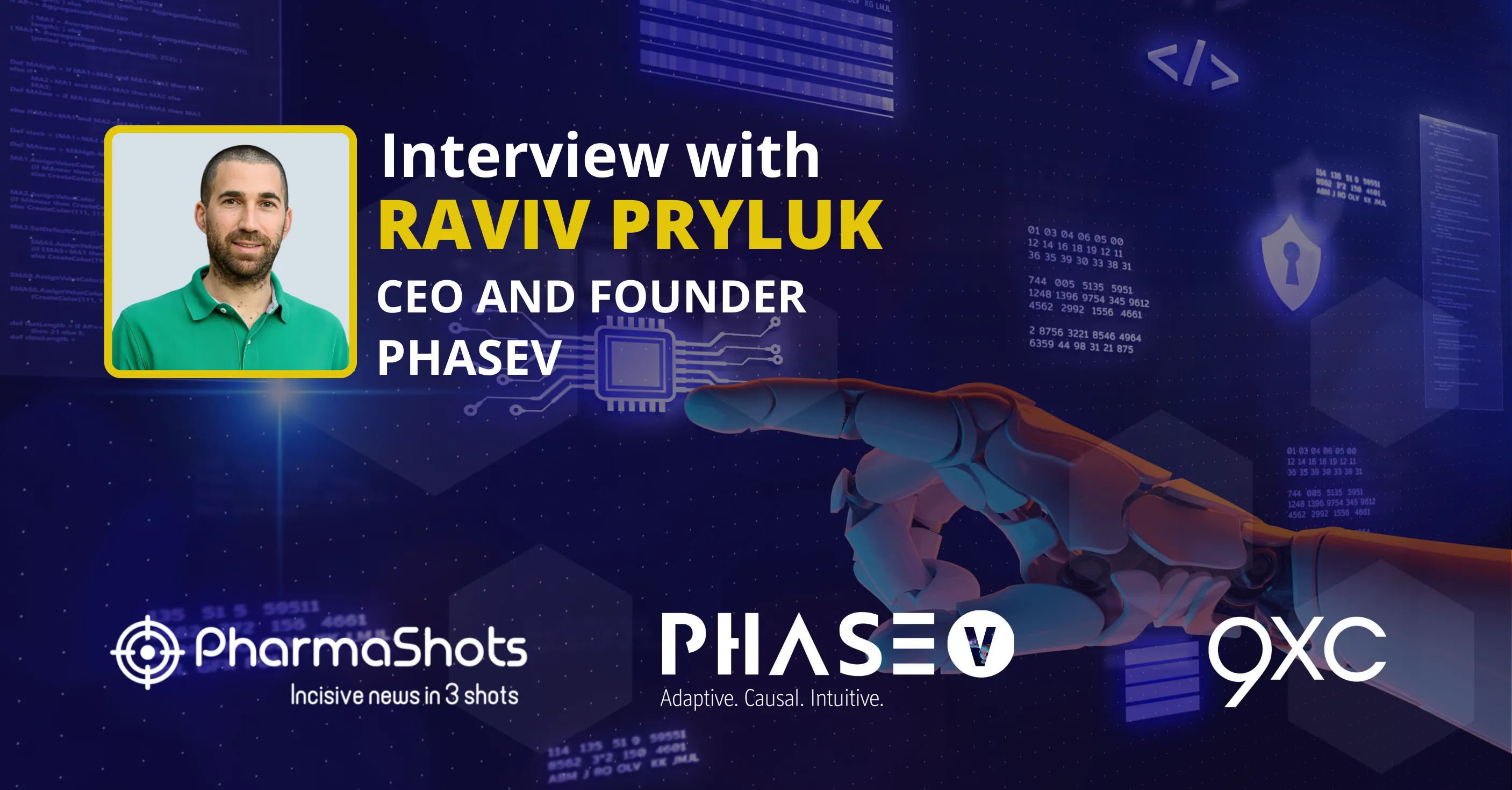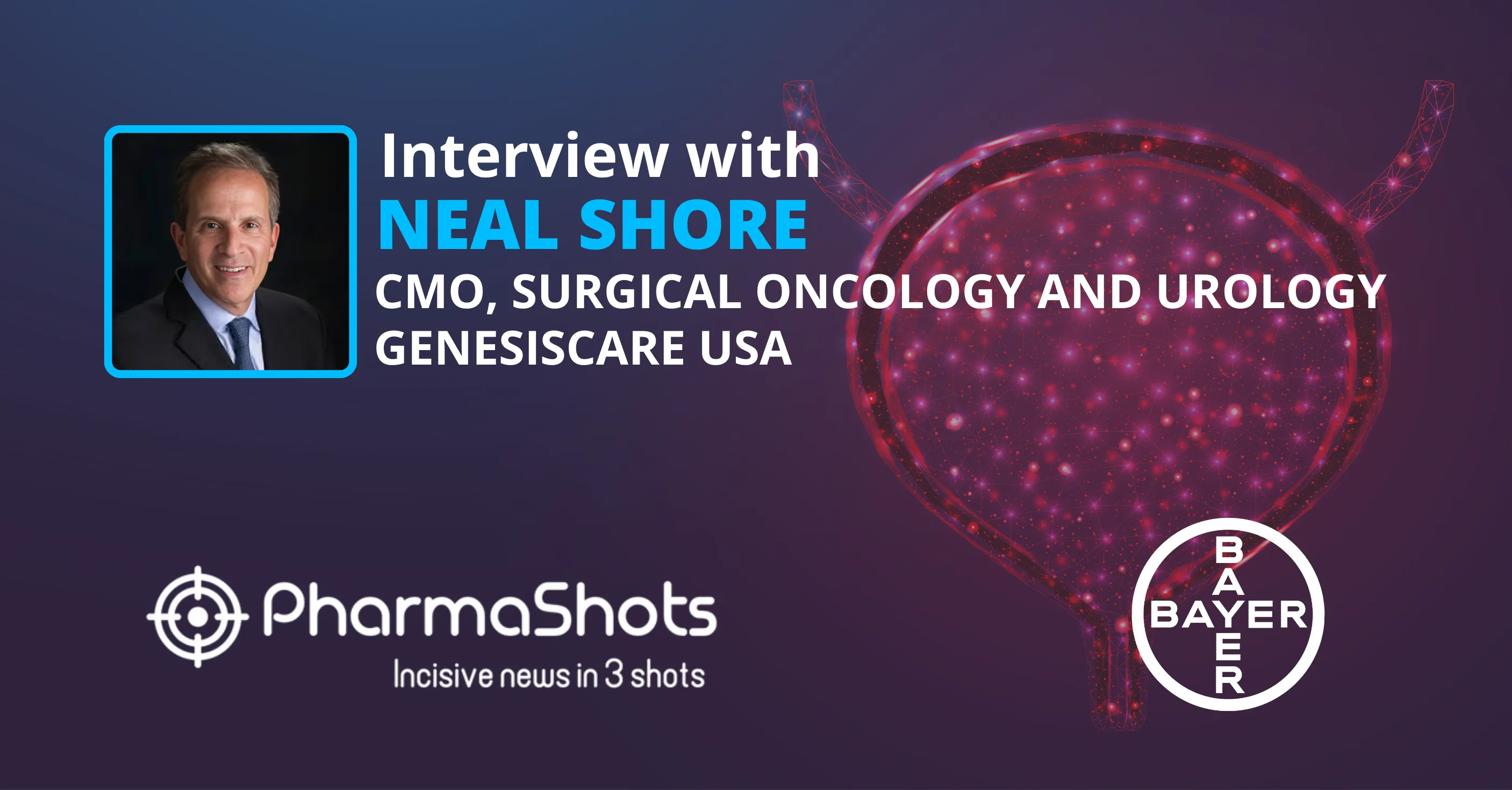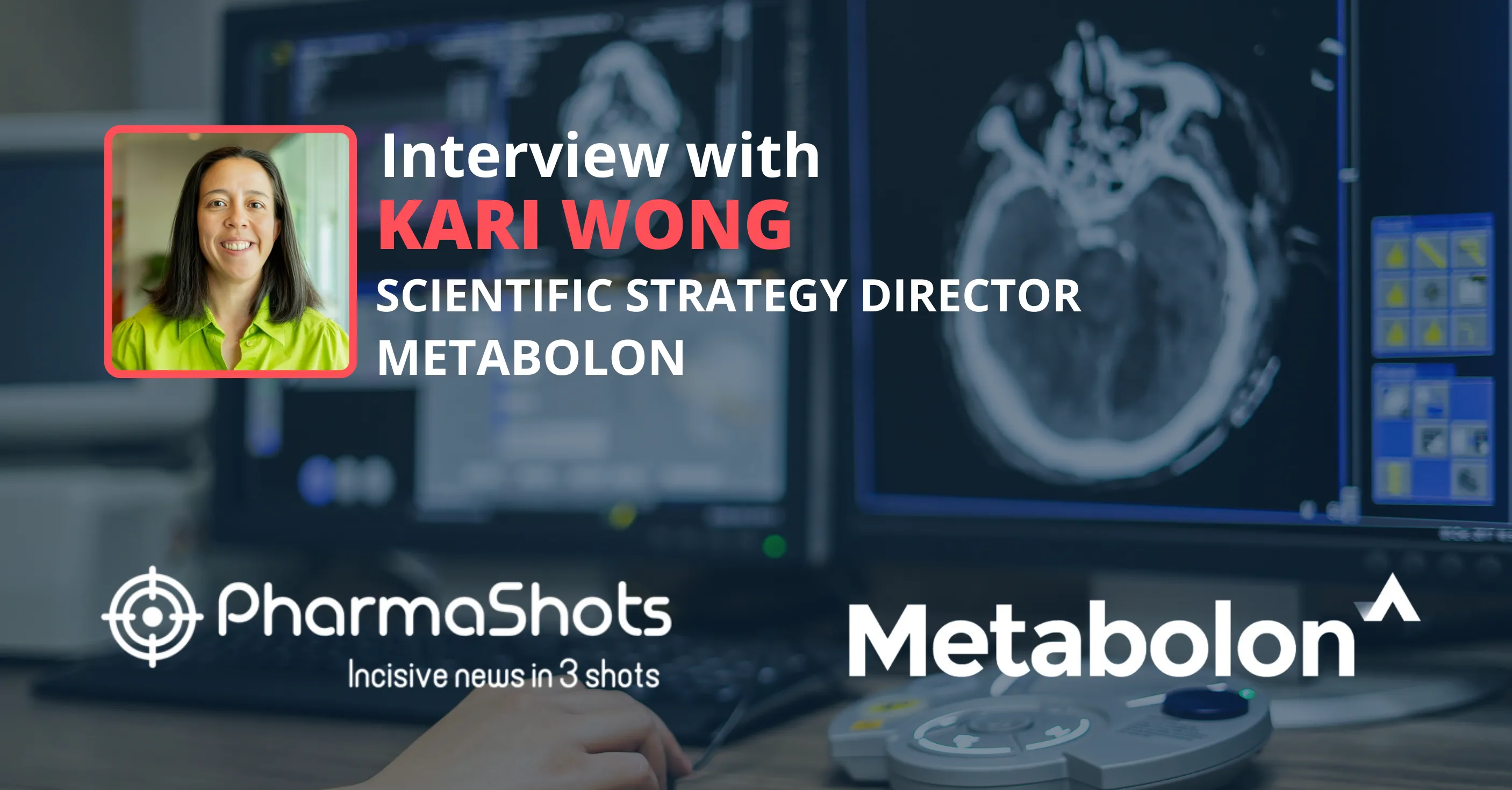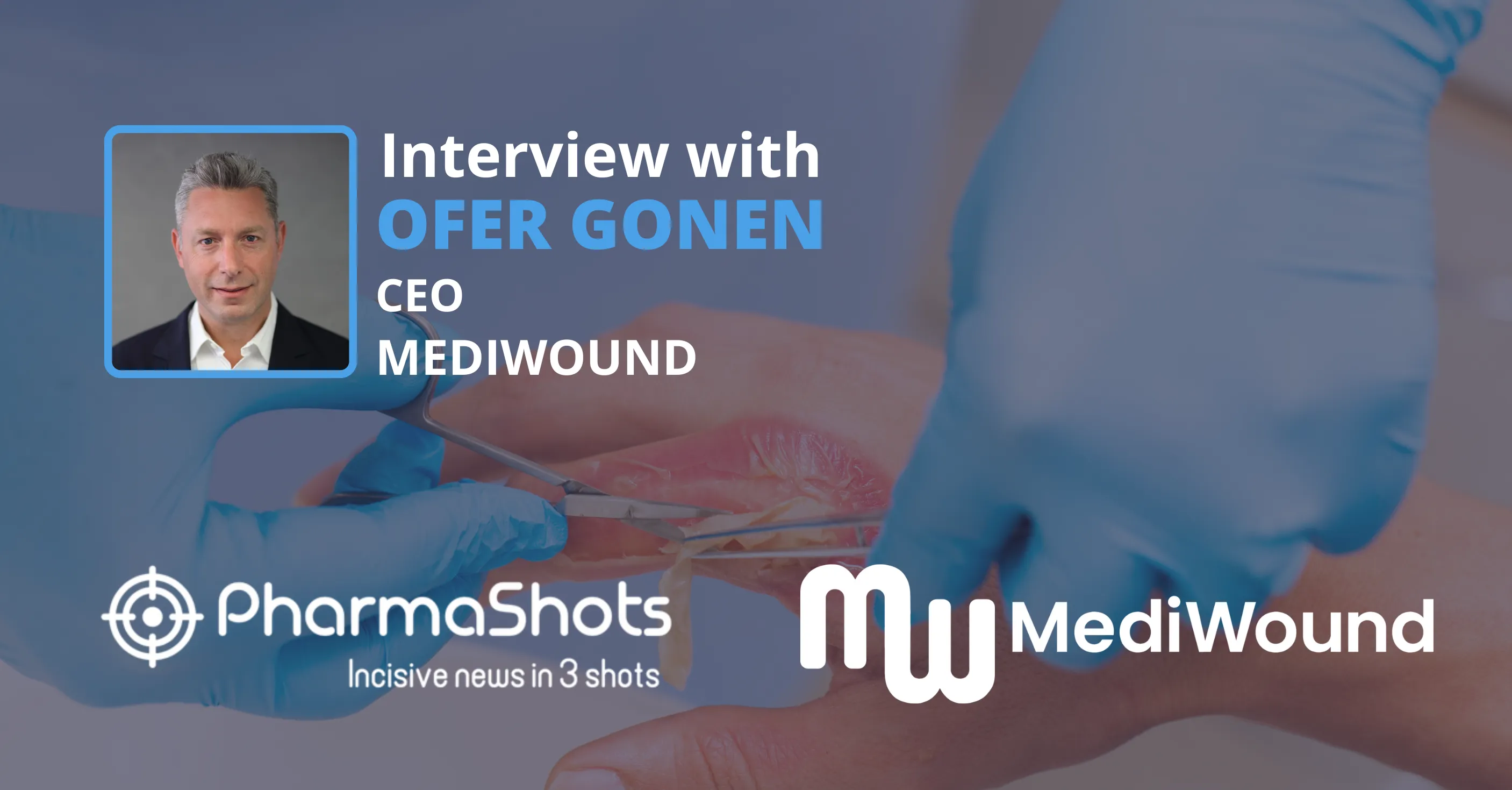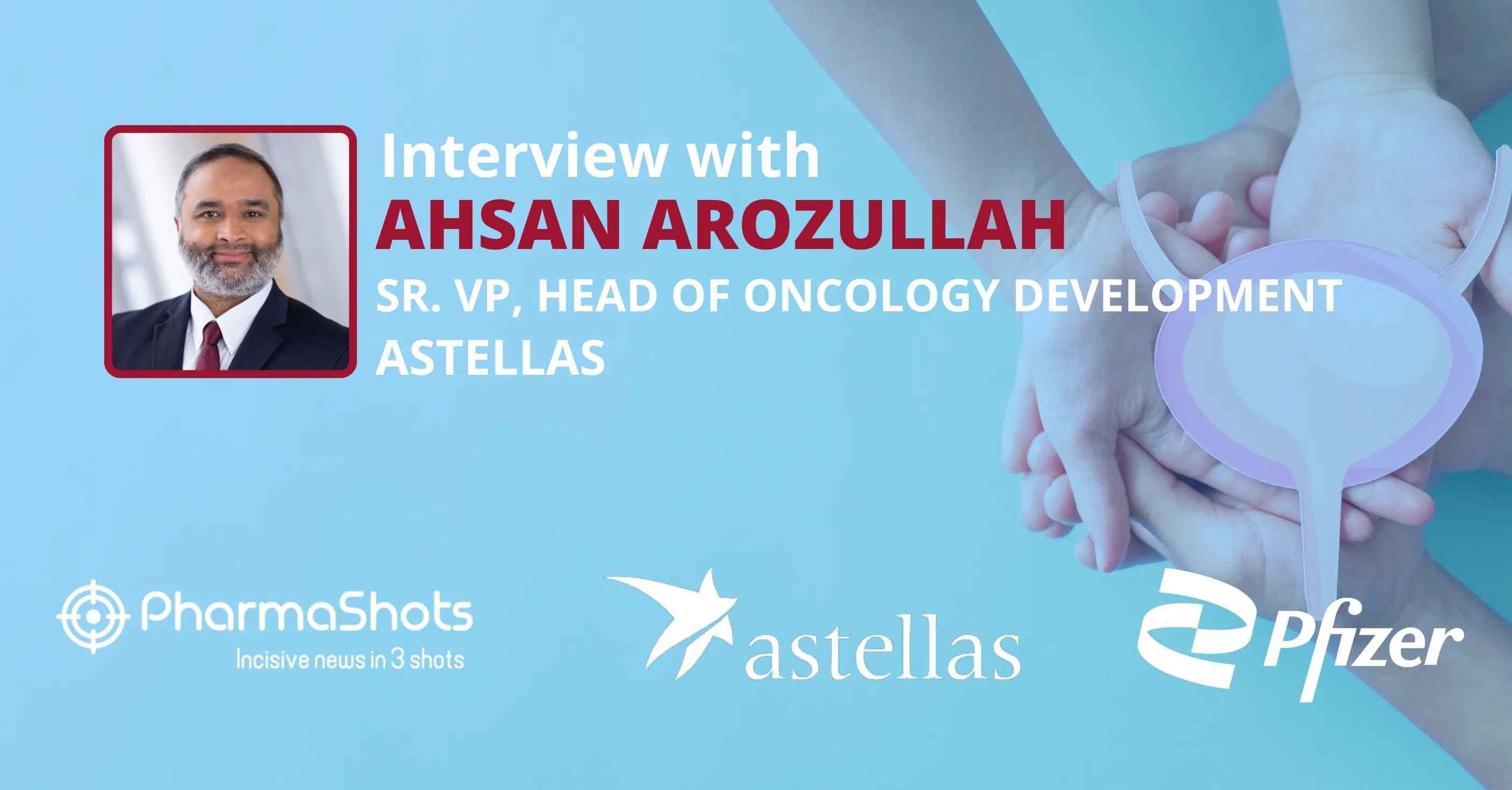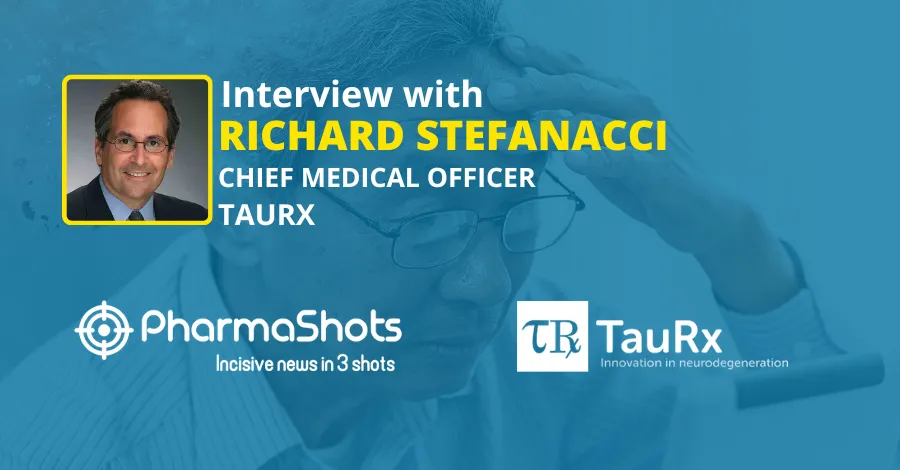
Michael Irizarry shares insights from the P-III clinical study of LEQEMBI, for the treatment of Alzheimer’s disease
Shots:
- Michael Irizarry, Senior VP of Clinical Research and Deputy Chief Clinical Officer, Alzheimer’s Disease and Brain Health at Eisai in a stimulating conversation with PharmaShots
- Michael shares insights from the P-III clinical study Clarity AD of LEQEMBI for the treatment of Alzheimer’s disease
- The study highlights that LEQEMBI treatment met the primary endpoint and reduced clinical decline on the global cognitive and functional scale, CDR-SB, compared with placebo at 18 months by 27.1%.
Saurabh: Please shed some light on the study design of the P-III clinical study (Clarity AD) that confirms the clinical benefit of LEQEMBI for the treatment of Alzheimer's disease.
Michael: Clarity AD is Eisai’s Phase 3 global placebo-controlled, double-blind, parallel-group, randomized study in 1,795 patients with early AD. The treatment group was administered LEQEMBI 10 mg/kg bi-weekly, with participants allocated in a 1:1 ratio to receive either placebo or lecanemab. The trial was stratified for APOE carriers (APOE±) and disease stage (MCI/mAD).
Eligibility criteria allowed patients with a broad range of comorbidities/comedications: hypertension, diabetes, heart disease, obesity, renal disease, anti-coagulants, etc. Eisai felt that it was important to understand the safety and efficacy of LEQEMBI across the biological continuum within early AD, the population in the USPI indication statement, rather than selecting a population believed to provide the most responsive group. For this reason, participants with low levels of tau were included in the study.
Eisai’s recruitment strategy for the Clarity AD clinical trial ensured greater inclusion of ethnic and racial populations in the U.S., resulting in approximately 25% of the total U.S. enrollment including Hispanic and African American persons living with early AD. Due to the inclusive eligibility criteria and the successful recruitment of diverse ethnic and racial populations in the U.S., Clarity AD’s population is generally comparable to the portion of Medicare population who may be appropriate candidates for LEQEMBI.
Saurabh: Please highlight the results of Eisai’s P-III trial (Clarity AD) as presented at the CTAD conference and published in the journal, ‘The New England Journal of Medicine’.
Michael: The traditional approval of LEQEMBI was supported by findings from Eisai’s large, global, confirmatory Phase 3 Clarity AD trial (Study 301), in which LEQEMBI treatment met the primary endpoint and reduced clinical decline on the global cognitive and functional scale, CDR-SB, compared with placebo at 18 months by 27.1%. This represents a treatment difference in the score change of -0.451 (p=0.0001).1
Starting at six months, across all time points, LEQEMBI treatment showed statistically significant changes in the primary and all key secondary endpoints from baseline compared to placebo (p-value less than 0.0001).
Key secondary endpoints were the change from baseline at 18 months for LEQEMBI treatment compared to placebo in amyloid levels in the brain measured by amyloid positron emission tomography (PET), the AD Assessment Scale-cognitive subscale 14 (ADAS-Cog14), AD Composite Score (ADCOMS) and the AD Cooperative Study-Activities of Daily Living Scale for Mild Cognitive Impairment (ADCS MCI-ADL).1
All key secondary endpoints also showed highly statistically significant results compared with placebo (P<0.001). In the amyloid PET sub-study, treatment with LEQEMBI showed statistically significant reduction in amyloid plaque burden at all timepoints starting at 3 months. Mean change in Centiloids at 18 months was -55.5 and 3.6 for LEQEMBI and placebo groups, respectively (mean difference: -59.1 [95%CI: -62.6, -55.6]; P<0.00001). LEQEMBI slowed decline of cognitive function by 26% on ADAS-Cog14 at 18 months (mean difference: -1.44 [95%CI: -2.27, -0.61]; P=0.00065). In the ADCOMS assessment, LEQEMBI slowed disease progression by 24% at 18 months (mean difference: -0.050 [95% CI: -0.074, -0.027; P=0.00002]). LEQEMBI slowed decline of activities of daily living by 37% on ADCS MCI-ADL at 18 months (mean difference: 2.016 [95%CI: 1.208, 2.823]; P<0.00001). In addition, the primary stratified analysis showed consistent results in CDR-SB, ADAS-Cog14 and ADCS MCI-ADL at 18 months of treatment with LEQEMBI in all subgroups of disease stage (MCI due to AD or mild AD), ApoE4 status (non-carriers, carriers), presence or absence of concomitant approved AD symptomatic medication, and region (North America, Asia, Europe).
The most common adverse events (>10%) in the LEQEMBI treatment group were infusion reactions (LEQEMBI: 26%; placebo: 7%), amyloid related imaging abnormality - microhemorrhages (ARIA-H) (LEQEMBI: 14%; placebo: 8%), amyloid related imaging abnormality - edema/effusion (ARIA-E) (LEQEMBI: 13%; placebo: 2%), headache (LEQEMBI: 11%; placebo: 8%), and superficial siderosis of central nervous system (LEQEMBI: 6%; placebo: 3%).1
Infusion reactions were mild (69%) or moderate (28%) in severity and the majority (75%) occurred with the first infusion.1
The results of the Clarity AD study were presented at the Clinical Trials on AD (CTAD) conference and simultaneously published in the peer-reviewed medical journal, The New England Journal of Medicine.
Saurabh: What makes Eisai’s LEQEMBI, a ground-breaking treatment alternative for patients with Alzheimer’s disease?
Michael: LEQEMBI is the first and only approved treatment shown to reduce the rate of disease progression and to slow cognitive and functional decline in adults with Alzheimer's disease. LEQEMBI demonstrated clinically meaningful slowing of cognitive and functional decline in a patient group generalizable to U.S. Medicare beneficiaries, which included a mix of racial and ethnic groups, patients with common comorbid conditions, concomitant medications and patients with mild cognitive impairment (MCI) due to AD or mild AD. Treatment with LEQEMBI should be initiated in patients with MCI or mild dementia stage of disease, (collectively referred to as early AD) the population in which treatment was initiated in clinical trials.
- The most recent data presented support efficacy of LEQEMBI across cognitive, functional, quality of life, and caregiver burden endpoints in early AD across the spectrum of tau burden. Eisai felt that it was important to understand the safety and efficacy of LEQEMBI across the biological continuum within early AD, the population in the USPI indication statement, rather than selecting a population believed to provide the most responsive group.
LEQEMBI’s traditional approval was based on Phase 3 data from Eisai’s large, global Clarity AD clinical trial, in which LEQEMBI met its primary endpoint and all key secondary endpoints with statistically significant results and confirmed the clinical benefit of LEQEMBI. The primary endpoint was the global cognitive and functional scale, Clinical Dementia Rating Sum of Boxes (CDR-SB). LEQEMBI treatment reduced clinical decline on CDR-SB by 27% at 18 months compared to placebo. Additionally, the secondary endpoint of AD Cooperative Study-Activities of Daily Living Scale for Mild Cognitive Impairment (ADCS MCI-ADL), as measured by people caring for patients with AD, noted a statistically significant benefit of 37%. This measures the ability of patients to function independently, including being able to dress, feed themselves and participate in community activities.
Based upon the data observed, we continue to strongly believe that LEQEMBI is meaningfully differentiated on the incidence of ARIA E and H. Eisai and Biogen believe that management of ARIA in clinical practice is becoming a greater focus as anti-amyloid antibodies potentially become more widely utilized in early AD treatment. Importantly, LEQEMBI was studied in a broad population that included participants with low levels of tau.
LEQEMBI has a growing body of evidence to help us understand the benefit/risk of treatment duration beyond 18-months and after the removal of plaques, thus providing the potential to inform individualized treatment duration choices. This is important because AD is a chronic disease and continues to progress despite plaque clearance indicating that other factors are at play in addition to plaque. It is important to understand that over an 18-month treatment period LEQEMBI removes plaque quickly while maintaining a low ARIA incidence, while it also leads to clearance of large oligomers (protofibrils).
Saurabh: Eisai’s LEQEMBI has been marketed in the US. Is the company planning to launch it in other countries for the treatment of Alzheimer’s disease?
Michael: In addition to the United States, Eisai has submitted regulatory filings for LEQEMBI in Europe and five countries, including Japan, China, Canada, Great Britain and South Korea. In Japan and China, the applications have been designated for priority review, and in Great Britain, lecanemab has been designated for the Innovative Licensing and Access Pathway (ILAP), which aims to reduce the time to market for innovative medicines.
Saurabh: Apart from LEQEMBI, what are the therapies and diagnostic methods that Eisai is investigating for the treatment of Alzheimer's disease and other such neurological disorders?
Michael: Eisai has several collaborations related to diagnostic testing. The regulatory approval and reimbursement status of these Aβ diagnostic tests is as follows:
- Eisai is supportive and involved in many different collaborative initiatives across numerous diverse leaders involved in various aspects of AD diagnosis. One example is our relationship with Sysmex Corporation, which seeks to leverage individual technologies and expertise in the creation of next-generation diagnostic agents that may aid in early diagnosis of dementia, treatment selection, and regular confirmation of treatment efficacy. Another example is with C2N, with whom we are collaborating to build awareness and real-world evidence in support of advancing their blood-based AD diagnostic. And we are also working to advance digital solutions via a collaboration named NEURii, alongside Gates Ventures, Health Data Research UK (HDR UK), LifeArc and The University of Edinburgh to support the detection, monitoring and treatment of dementia patients to improve their lives.”
- Eisai has completed a LEQEMBI subcutaneous bioavailability study, and subcutaneous dosing is currently being evaluated in the Clarity AD (Study 301) OLE. A supplemental Biologics License Application (sBLA) for subcutaneous dosing regimen is targeting submission to the FDA before the end of Eisai's fiscal year, which is March 31, 2024.
Beyond Study 201 and Clarity AD open-label-extension studies, other ongoing studies of LEQEMBI are as follows:
- Since July 2020, the Phase 3 clinical study (AHEAD 3-45) for individuals with preclinical AD, meaning they are clinically normal and have intermediate or elevated levels of amyloid in their brains, is ongoing. AHEAD 3-45 is conducted as a public-private partnership between the Alzheimer's Clinical Trial Consortium that provides the infrastructure for academic clinical trials in AD and related dementias in the U.S, funded by the National Institute on Aging, part of the National Institutes of Health, Eisai and Biogen.
- Since January 2022, the Tau NexGen clinical study for Dominantly Inherited AD (DIAD), that is conducted by Dominantly Inherited Alzheimer Network Trials Unit (DIAN-TU), led by Washington University School of Medicine in St. Louis, is ongoing.
Please see the attached pipeline brochure for a list and details on our current compounds.
Saurabh: Can we talk about some of the Patient education, and engagement programs except co-pay or financial assistance?
Michael: We have developed educational and supportive efforts, known as the Eisai Patient Support Program, to help simplify the entire treatment journey for patients and their families, which we believe will help ease their burden. For example, Eisai offers patient support for improving access through LEQEMBI Patient Navigators, who will provide information about accessing LEQEMBI, help patients and their families understand their insurance coverage and options, and identify financial support programs for eligible patients. More information can be found at LEQEMBI.com.
Eisai and Biogen have several ongoing initiatives to further simplify the journey for patients:
- developing a subcutaneous formulation to potentially enhance LEQEMBI’s clinical utility and ease of use;
- ongoing efforts to further understand treatment duration options for patients; and
- exploring a less frequent, maintenance dosing regimen may provide additional long-term benefit.
Saurabh: Please tell our readers about the company's investigational and novel drugs in other therapeutic areas with unmet needs.
Michael: Our rich pipeline includes a wide scope of investigational disease-modifying compounds and diagnostic methods being researched in Alzheimer’s disease. We’re also exploring novel therapies designed to address clinical symptoms such as cognition and sleep disorders. Additionally, our ground-breaking Center for Genetics Guided Dementia Discovery (G2D2) is focused on delivering a new generation of immunodementia drugs that can bolster the body’s immunity against dementia.
Image Source: Canva
About the Author

Michael Irizarry
Michael Irizarry, M.D., M.P.H., is Senior Vice President of Clinical Research and Deputy Chief Clinical Officer of the Alzheimer’s Disease and Brain Health, Eisai Inc. He is responsible for the overall strategy and clinical development of the company’s neurosciences portfolio, including clinical pharmacology and translational medicine. Dr. Irizarry joined Eisai in September 2018 as Vice President of Clinical Research, Epilepsy/Sleep, in which he led the clinical development of Eisai’s Epilepsy and Sleep/Wake programs, including regulatory submissions for compounds that received regulatory approvals to treat epilepsy and insomnia. He was named Vice President of Clinical Research for Eisai’s neuroscience business in May 2019, and soon promoted to his current dual role in April 2020. Prior to joining Eisai, Dr. Irizarry served as Vice President, Early Clinical Development, Neurosciences at Eli Lilly, responsible for the Phase 1 and 2 neurosciences portfolio. His focus was on neurodegeneration advancing molecules from candidate selection to investigational new drug applications, up through proof-of-concept studies. Before joining Eli Lilly, he was Acting Vice President, World-Wide Epidemiology at GlaxoSmithKline, where his team of more than 60 epidemiologists and database analysts supported clinical trial planning; safety and effectiveness studies; and oversight and application of in-house claim databases and electronic health records. Dr. Irizarry earned undergraduate and medical degrees from Georgetown University, and a Masters of Public Health (M.P.H.) degree from the Harvard School of Public Health. He completed his neurology residency and Memory Disorders Fellowship at Massachusetts General Hospital, and continued as a member of the Harvard Medical School faculty at the Massachusetts Alzheimer’s Disease Research Center. His research has encompassed molecular mechanisms, clinical-pathological correlations, animal models, biomarkers, and epidemiology of neurodegenerative diseases, especially Alzheimer’s disease.
Tags

Saurabh is a Senior Content Writer at PharmaShots. He is a voracious reader and follows the recent trends and innovations of life science companies diligently. His work at PharmaShots involves writing articles, editing content, and proofreading drafts. He has a knack for writing content that covers the Biotech, MedTech, Pharmaceutical, and Healthcare sectors.



